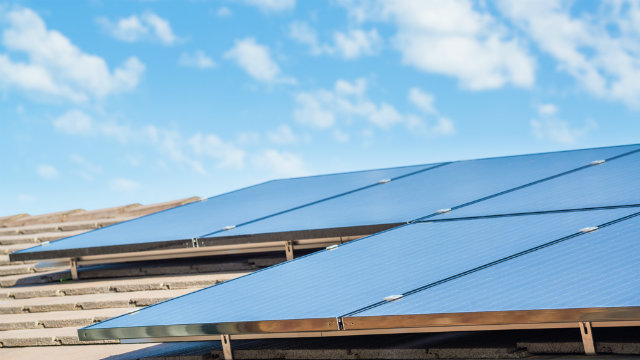Most of us have a pretty narrow vision of “solar energy”: panels on the roof producing electricity when the sun’s shining. But not only is that a limited view of solar power production, but also of the ways which we can take advantage of sunshine. Regardless of the time of year or place we live, we all receive tons of free energy from the sun; putting that energy to use can involve the installation of technology, but it can involve making some simple changes in our daily routines. So, just as you don’t throw open the doors and windows when the heat or air conditioning on, don’t let that sunshine go to waste.
5 Ways to Make Use of All that Solar Energy Going to Waste
1. Open the Curtains and Heat Your Home: One of the simplest ways to make use of sunlight in the cold months is to open the blinds or curtains, and let the light (and heat) inside. If you’ve got single-pane windows, you probably want to do this in conjunction with some kind of “double-paning” tactic like putting up storm windows, or even bubble wrap. If you’re feeling really ambitious, you can also build a soda can solar heater to capture even more heat.
2. Hang Your Clothes Out to Dry: During the Spring and Summer months, an electric or gas-powered clothes dryer can largely sit idle. If you’ve got sunlight available, you probably have all the clothes-drying power that you need. If you use a liquid fabric softener, though, you will want to throw those clothes in the dryer for 5 minutes to set the softener… than hang ’em out. Sheets and towels do particular well with this use of solar energy: they smell great afterwards!
3. Garden Year-Round: Miss those fresh vegetables in the Winter months? Who doesn’t! A cold frame or greenhouse can help you keep that fresh food coming throughout the year… and you can build either one with readily-available materials and a little elbow grease.
4. Give Your Water Heater a Hand: Solar hot water is a fairly simple technology that uses sunlight to heat water. It’s great for people without access to gas or electricity; for those that have such utilities, it can help you minimize their use for hot water.
5. Power Your Home and Lifestyle: Yep, putting solar panels up on the roof is still a legitimate way to keep that sunlight from going to waste… and with the various incentives available, as well as the decreasing cost of materials themselves, it’s becoming a cheaper option. If you don’t feel like you can justify the cost of purchasing a system, power purchase agreements are available in many places, too, as as collective arrangements for apartment renters.
Of course, nothing would be better than a solar energy system that cost you nothing… and if you live in certain parts of Arizona, California, Colorado, Hawaii, or New York, you’ve now got an opportunity to win just that. The SunPower Solar Sweepstakes will give away a complete SunPower solar system (a $16,500 value) to one lucky winner from the eligible areas. No purchase is necessary, and you have until December 19th to enter. The winner will be announced in January. If you’ve got other questions about the sweepstakes, they’re probably answered here.
This post was generously supported by SunPower
Image credit: Shutterstock


Ron Winton
Here’s a sixth way to to take advantage of all that Sunshine and it costs less than Sunpower and offers up to a 22% efficiency rating. In fact, the new 300 Watt, 60 cell solar panels that are used in Hyper X 2 solar systems offers a better PTC to STC ratio “Real World” performance according to the California Energy Commission’s performance rating listings than over 119 of SunPower’s solar panel models.
Instead of boxy looking 1 1/2 to 2 inch thick framed Gen 1 solar panels, these new higher performance Gen 2 solar panels are only 1/4 inch thin and are made with a stronger, see through, glass on glass, frameless, construction that allows sunlight to pass through and reflect off the roof’s surface, thus illuminating the backside of the double sided solar cells, producing additional power.